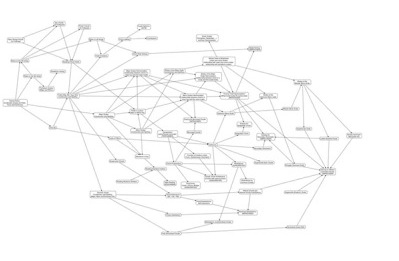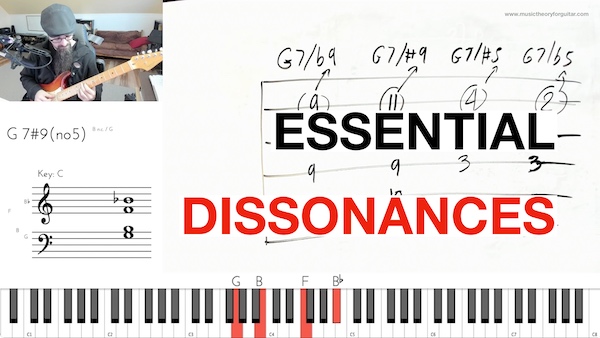Why You Should Learn The ALTERED DOMINANT Chords


Do you want your playing to sound more sophisticated? Do you want everyone who listens to you play to think you’re a musical genius?
Well, look no further. Altered dominant chords will save the day.
(Hey. if they worked for Hendrix, they can work for you...)
Picture this. You’re playing a G7 chord, and it just isn’t gritty enough. You want the chord to be so tense and grim that it starts to physically hurt.
... but the regular G7 just doesn’t cut it. Too bland. What do you do?
Simple. You turn it into an altered dominant chord. This accomplishes two things:
Makes the chord more gnarly, and subsequently the resolution more satisfying.
Makes you seem really really intelligent.
We are just missing a little detail of course. "Tommaso, what is an altered dominant chord?" You'll ask...
Put simply, it’s when you make a simple one note addition to a dominant chord. But it can’t be just any note, it has to be one of four specific notes.
If you want to know what those four specific notes are, how to play these chords on the guitar, and the best times to use them, watch the video below:
Want to know more about chords? Check out my Complete Chord Mastery guitar course if you want to develop a complete understanding of chords and harmony on the guitar!
Video Transcription
Hello Internet, so nice to see you! People have been asking me what are altered dominant chords, how you play the guitar, how do you use them? Okay, in this video we're going to do exactly that.
First of all we need to see what is a regular dominant chord. Okay, so let's go to the whiteboard immediately and see it. A regular dominant chord is a chord. Let me do everything in C major, a regular dominant chord would be like G7 for instance.
It's a chord that contains a major third, major third, and a minor seventh, often simply written as seventh, okay. Okay, those two notes are a tritone apart, okay, and those gives this kind of, this feeling here, this dissonance here, and that's a dominant chord, okay, nothing strange so far.
These dominant chords can be extended, we can play other notes with it and it's quite difficult to play with a ninth for instance, that would be a ninth, okay, or a sharp 11 or other alterations, sorry, not alterations, or other extensions like that, but that's a regular dominant chord.
In comparison, an altered dominant chord, typically written G7-alt, okay, it's a dominant chord, so it still contains the root, the major third and the minor seventh but then there is at least one of those four following notes you're gonna have either a flat five so a d flat okay uh let me write this back there actually right so you can have a d flat or a d sharp so either a flat five or a sharp five or i'm gonna have an a flat or an a sharp again in the case of g which are either a flat flat what am i writing here a flat nine or a sharp nine a dominant chord so that contains the major third and minor seventh that contains one of those four notes it's cold one or more by the way of four notes it's called a altered seventh chord that's a very practical definition.
Okay? Other people is a slightly different definition, but that's a good practical definition that will serve you well, okay? And you can contain one or more, or even though all those four of those notes.
So you can have a G7 that contains both a flat 5 and a sharp 5, or both a flat 9 and a sharp 9. Those are a bit hard to play, okay? Or a flat 9 and a sharp 5, or a sharp 9 and a sharp 5, or a sharp 9 and a flat 5.
Any combination, but at least one of those, or up to all four, that will be a dominant, altered dominant 7th chord, okay? Now, again, this gives you a lot of freedom. If you're just getting started in playing those, I would recommend you learn four shapes on your guitar, which I'm going to write down immediately, okay?
And I'm going to write them down in this position, so you can play them immediately. And those, those positions will be one of each, meaning I'm going to have one chord with a sharp 9, one chord with a flat 9, one chord with a sharp 5, and one chord with a flat 5.
So you could have the G7 with a flat 9, the G7 with a sharp 9, the G7 with a sharp 5, and the G7 with a flat 5, okay? Two of those chords have the root on the fifth string, and two of those chords have the root on the sixth string, just because they are easier to play this way, okay?
If you learn those four shapes, you have enough in one of each. You can play all of them, and they're easy enough to play, okay? So the G7 with a flat 9 will be this. It's 10, 9, 10, 9. The top not being the flat 9 okay the g7 with a sharp 9 it's 10 9 10 11 the 11 here being the sharp 9 okay the top note of all those chords it's always the alteration that's one of the reasons why those shapes sound so good okay um the g7 with a sharp 5 will have the root on the this one on the 4 so 3 3 4 4 and the g7 with a flat 5 it's 3 3 4 2 and again 3 4 2 and these two these these four and these two are the the sharp 5 and flat 5 respectively so let me play all of those the g7 with a flat 9 the g7 with a sharp 9 also known as the Hendrix chord.
The G7 with a sharp 5, and the G7 with a flat 5. Okay, you see they all have this very dissonant unsettling sound, so they work well when you want this, okay? So all those, again, all those are in the key of C, even if the alteration is not in the key of C, it's never in the key of C, because none of those notes are in the key of C.
But it works in the key of C, major or minor, by the way. So I could have a C major chord, and then move to a G7 with a sharp 5. It's very jazzy, okay? Sure. But it works. Or you can have a C major 7 here, and move it to a G7, flat 9.
Or the sharp 9. Okay, that's another position for C major 7, okay? So in this case, the chord progression is very simple. It's 1-5-1 in the key I want, and the key was C major, and as the fifth chord, I'm using those chords here.
How do I use those chords in real life? Okay, again, first of all, memorize the shapes. They're good. How do I use those chords in real life? Well, very simple. Anytime, you use it by substitution. Anytime, in any chord progression, you see a dominant chord, any dominant chord, so any chord with the seven after that okay just the seven not minor seven just dominant you can substitute that for an altered dominant chord simple as that so you have a chord progression let's say any any kind of chord progression okay and let's say you have something like that that's A minor seven D minor nine okay nothing super complex and then E7 and then A minor seven so this is one for five in E harmonic in A harmonic minor okay or in A minor because A harmonic minor technically part A minor the E7 can be played with a sharp nine or with a flat or with a sharp five or with a flat 5 and with a flat 5.
And it would work, of course, if I play with a sharp 5 or a flat 5, I need to move it in this position. So I need to find a way to play the A7 this way, the D minor this way, E7 with a flat 9, and then again, A minor 7, or A minor 7, D minor 7, E7 with a sharp 5, and A minor 7.
Or here, A minor 7, D minor 9, E7 with a flat 5, and then again, A minor 7, or E, A minor 7, D minor 9, E7 with a sharp 9, and then A minor 7. So the point is, whenever you have a normal dominant chord, you can substitute it with an altered dominant chord.
What does that mean, exactly? Does that mean that every time you try that substitution, it will work? Nope. That's not what it means. That's not what it means at all, okay? It means that you can try.
Then you have to use your ears, okay? And see if it makes sense to do it, because sometimes the altered chord, or the alteration you choose, will not work. But you cannot tell a priori, okay, you cannot tell beforehand, unless you have a lot of experience and a good ear, because it could be that the harmony in the position doesn't support the alteration properly, or it could be that the melody conflicts with the alteration you choose,
or it could be a number of things, okay? But, and incidentally, this is true of every substitution. There is no substitution rule that works literally every single time period. Whenever people say that you can substitute a chord, it means that you can try and see if it works in your song.
Since all songs are different, sometimes it works, sometimes it doesn't, but we know that sometimes it does work, so it's worth trying, okay? That's the idea. So, you try, whenever you have a normal dominant chord, try to play another dominant.
Instead, again, one of the four shapes I've shown you before, and see and hear if it sounds to your face. Those chords, again, can sound jazzy, but they can sound also rock, and they can sound in many different ways.
Again, Hendrix used the sharp 9th to very good effect, the 7th sharp 9th to very good effect, and plenty of those chords can sound great in different situations. So, that's how you use it. That's basically a crash course in less than 12 minutes on altered dominant.
Chords if you want to know more about those courts and several other courts I would recommend you guys have a look at my course complete chord mastery Where we talk about all kind of chords all kinds of chord progression and how those chords fit in those chord progression and how to make Everything work well so that you can do daring substitutions When you change completely and nearly completely the court progression and add alteration extensions and other things and make you sound Wonderful this course explain everything it is to know about that so have a look at that. This is Tommaso Zillio for musictheoryforguitar.com and until next time, enjoy.